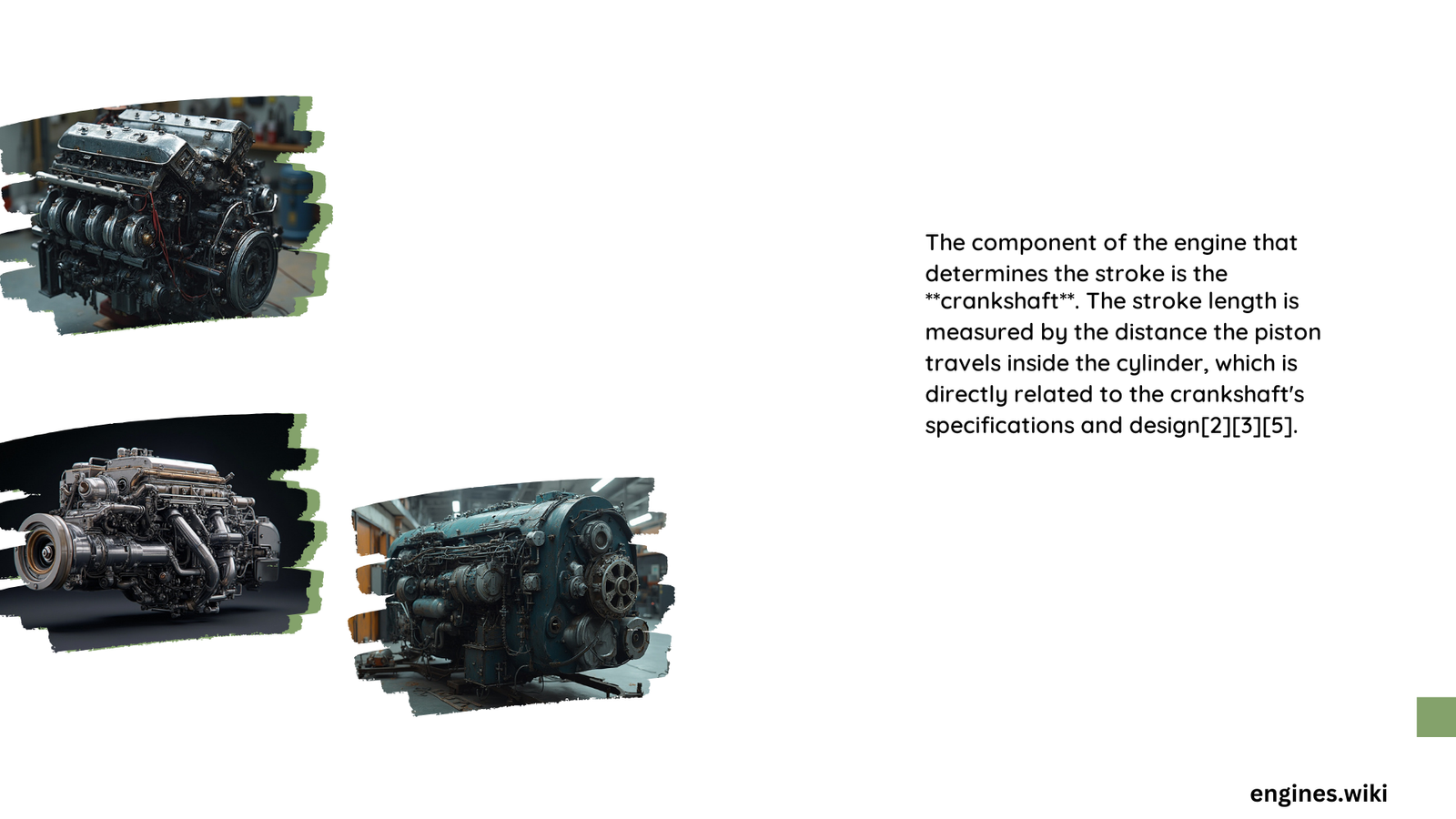The crankshaft serves as the critical component that determines an engine’s stroke length, converting linear piston motion into rotational energy through its precisely engineered design. By utilizing offset crankpins and specific geometric configurations, the crankshaft defines the total distance a piston travels within the cylinder, directly impacting engine performance, displacement, and mechanical characteristics.
What Makes the Crankshaft Critical for Stroke Determination?
The crankshaft represents the fundamental mechanical interface translating reciprocating motion into rotational power. Its design fundamentally controls stroke length through several key mechanisms:
How Does Crankshaft Geometry Define Stroke?
- Crank Throw Measurement: The distance between the crankshaft’s centerline and crankpin determines stroke length
- Precise Engineering: Stroke equals twice the crank throw distance
- Mechanical Precision: Typically measured in millimeters or inches
What Factors Influence Crankshaft Stroke Design?
| Factor | Impact on Stroke |
|---|---|
| Engine Type | Determines basic geometric constraints |
| Performance Goals | Influences stroke-to-bore ratio |
| Manufacturing Tolerances | Affects overall mechanical precision |
Why Does Stroke Length Matter?
Stroke length significantly impacts multiple engine performance characteristics:
- Displacement Calculation
- Directly influences total engine volume
- Determines potential power output
-
Affects thermal efficiency
-
Mechanical Stress Distribution
- Longer strokes increase mechanical loads
- Influences bearing and component durability
- Impacts potential maximum RPM
How Do Engineers Optimize Crankshaft Design?
Engineers consider multiple variables when designing crankshafts:
- Material Selection: High-strength alloys for durability
- Machining Precision: Minimal tolerances for consistent performance
- Computational Modeling: Simulating stress and motion characteristics
What Are Real-World Stroke Length Examples?
Practical automotive examples demonstrate diverse crankshaft designs:
- Mitsubishi 4G63: 88mm stroke length
- Chevrolet I6: 104.8mm stroke length
- Honda K-Series: Varying stroke lengths between 77.7-89mm
Can Stroke Length Be Modified?
Aftermarket modifications allow stroke length adjustments:
- Longer Stroke: Increases displacement
- Shorter Stroke: Enables higher RPM potential
- Requires Comprehensive Engine Redesign
What Mathematical Principles Govern Stroke Calculation?
The fundamental equation for stroke determination involves:
[
\text{Stroke Length} = 2 \times \text{Crank Throw}
]
Where:
– Crank throw represents the radial distance from crankshaft centerline
– Precise measurement ensures accurate mechanical translation
Technical Considerations for Optimal Performance
Critical factors influencing stroke effectiveness include:
- Connecting rod length
- Piston acceleration characteristics
- Thermal expansion tolerances
- Rotational inertia management
Conclusion

The crankshaft remains the definitive component determining engine stroke length, representing a complex intersection of mechanical engineering, precision manufacturing, and performance optimization.
